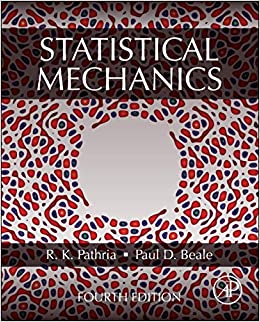Making use of another term of the Sommerfeld lemma (E.17), show that in the second approximation the
Question:
Making use of another term of the Sommerfeld lemma (E.17), show that in the second approximation the chemical potential of a Fermi gas at low temperatures is given by
\[\begin{equation*}\mu \simeq \varepsilon_{F}\left[1-\frac{\pi^{2}}{12}\left(\frac{k T}{\varepsilon_{F}}\right)^{2}-\frac{\pi^{4}}{80}\left(\frac{k T}{\varepsilon_{F}}\right)^{4}\right] \tag{8.1.35a}\end{equation*}\]
and the mean energy per particle by
\[\begin{equation*}\frac{U}{N} \simeq \frac{3}{5} \varepsilon_{F}\left[1+\frac{5 \pi^{2}}{12}\left(\frac{k T}{\varepsilon_{F}}\right)^{2}-\frac{\pi^{4}}{16}\left(\frac{k T}{\varepsilon_{F}}\right)^{4}\right] \tag{8.1.37a}\end{equation*}\]
Thence determine the \(T^{3}\)-correction to the customary \(T^{1}\)-result for the specific heat of an electron gas. Compare the magnitude of the \(T^{3}\)-term, in a typical metal such as copper, with the low-temperature specific heat arising from the Debye modes of the lattice. For further terms of these expansions, see Kiess (1987).
Step by Step Answer:






